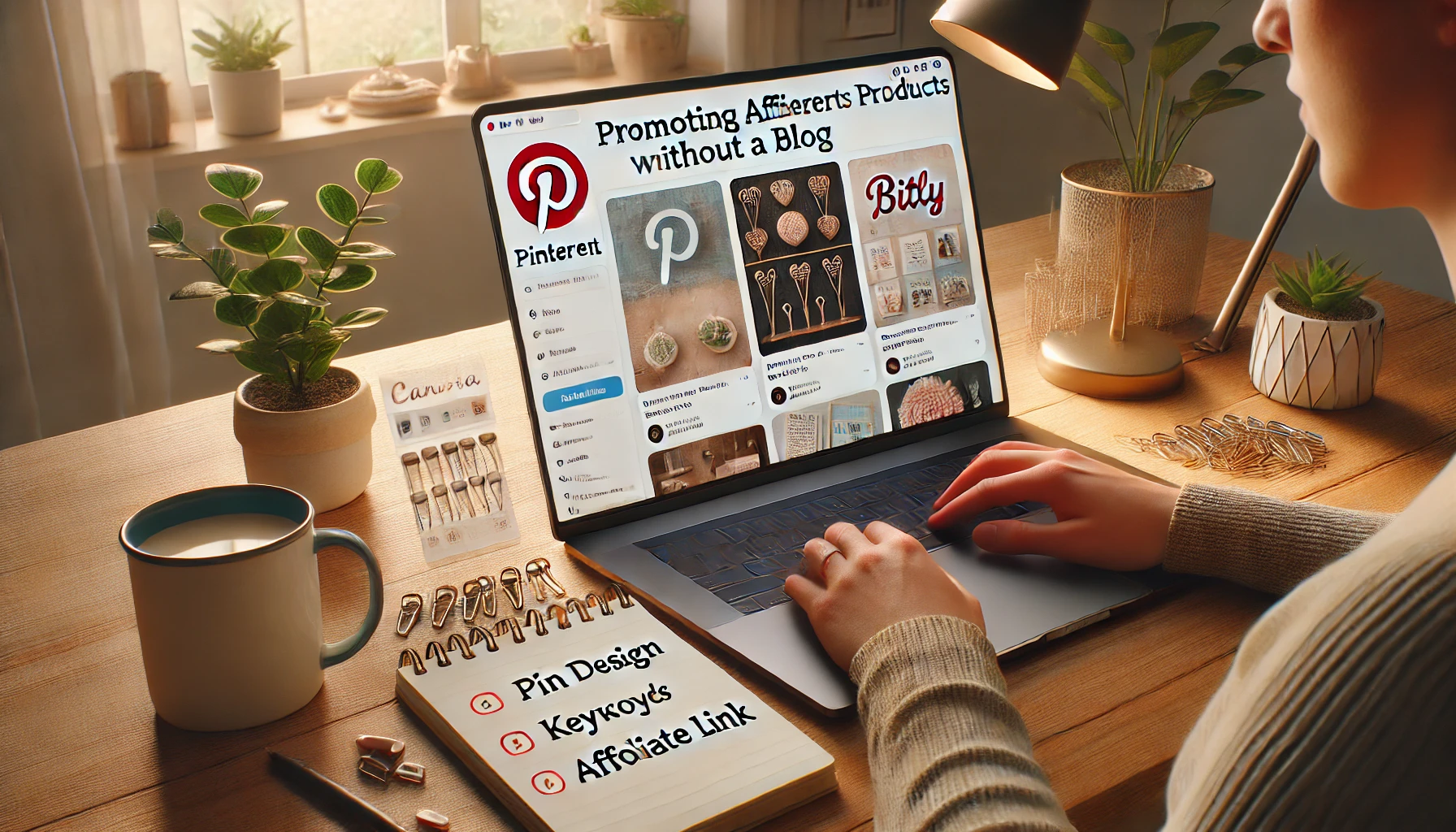Pinterest isn’t just a place for recipes and home decor — it’s a visual search engine with over 400 million active users searching for solutions, ideas, and products. And yes — you can absolutely use it to promote affiliate products without a blog.
In fact, Pinterest is one of the best platforms for affiliate marketing beginners because:
- It doesn’t require video or writing skills
- It drives evergreen traffic
- It works with both free and paid tools
- You can start promoting right away
In this article, you’ll learn exactly how to promote affiliate products on Pinterest, step by step — even if you don’t own a website.
Why Pinterest Works for Affiliate Marketing
Unlike Instagram or TikTok, where content disappears in hours, Pinterest pins can drive traffic for months or even years.
Why Pinterest is ideal:
- Users come to Pinterest ready to discover and buy
- Pins show up in search results and suggested feeds
- It’s easy to create affiliate-safe visuals
- You can direct users to affiliate-friendly landing pages or links
📌 Pinterest users are planners — they’re actively looking for inspiration, tools, and resources.
Step 1: Choose the Right Affiliate Product
You want to promote a product that:
- Solves a clear problem
- Has visual appeal or relevance
- Allows direct linking on Pinterest (check program rules)
Best niches for Pinterest:
- Home organization and decor
- DIY and crafts
- Personal development
- Health and wellness
- Freelancing, side hustles, and digital tools
- Budgeting and money tips
💡 Platforms like Systeme.io, Canva, and Etsy work very well on Pinterest.
Step 2: Set Up a Business Pinterest Account
It’s free and gives you access to:
- Analytics
- Rich pins
- Better content distribution
To set up:
- Go to business.pinterest.com
- Create a new business account or convert a personal one
- Optimize your profile with:
- A niche-relevant name (e.g., “Freelance Tools & Templates”)
- A keyword-rich bio
- Your profile photo or brand logo
🎯 Pinterest is search-based, so SEO starts with your profile.
Step 3: Create Boards with SEO in Mind
Think of your boards as categories. You want them to reflect the search terms people are using.
Examples:
- “Freelance Productivity Tools”
- “Work From Home Must-Haves”
- “Self-Care Essentials”
- “Best Budget Software for Creators”
Create 5–10 relevant boards and start pinning regularly.
Step 4: Create Click-Worthy Pins
This is the most important part — your pin graphic is what grabs attention.
Use Canva (Free) to design pins with:
- Bold, readable text
- Bright colors and clean fonts
- A mockup or visual related to the product
- A short benefit-driven phrase (e.g., “Free Template Inside” or “Save 10+ Hours a Week”)
Pin title example:
“The Best Free Tool I Use to Automate My Business”
💡 Use Pinterest’s search bar to see what others are searching and pinning.
Step 5: Add Your Affiliate Link (the Right Way)
Yes — you can link directly to affiliate products on Pinterest, but:
Read the program’s terms first:
- Amazon Associates does not allow direct linking on Pinterest
- ClickBank, Systeme.io, and many other platforms do
- If in doubt, send traffic to a bridge page or email signup with your link inside
When pinning:
- Upload your pin image
- Add your affiliate link in the destination URL field
- Write a keyword-rich title and description
- Choose the most relevant board
- Publish or schedule with Tailwind (optional)
🧠 Use UTM tags or a link shortener (like Bitly) to track clicks.
Step 6: Use Keywords in Your Pin Title and Description
Pinterest works like Google — the more keyword-relevant your content, the more likely it appears in searches.
Where to use keywords:
- In the pin title (e.g., “Top 5 Digital Tools for Solopreneurs”)
- In the description (mention benefits and who it’s for)
- In hashtags (use 2–5 relevant tags)
📌 Write like you’re helping someone who searched for a solution — not just pushing a product.
Step 7: Stay Consistent and Analyze Results
Pinterest success comes from volume and consistency.
To grow:
- Post at least 3–5 pins per day (use Tailwind to schedule)
- Try different designs for the same product
- Repin your content to multiple boards over time
- Watch what types of pins perform best
Track your:
- Clicks
- Saves
- Engagement
- Affiliate conversions
Then double down on what’s working.
Bonus: Use Bridge Pages or Email Opt-Ins
Even without a full blog, you can:
- Send traffic to a free Linktree or Beacons page
- Collect emails using Systeme.io or ConvertKit
- Build a simple bridge page introducing the product
🎁 Offer a freebie or bonus to increase opt-ins and conversions.
Final Thoughts: Pinterest = Passive Affiliate Potential
Pinterest is one of the best platforms to grow affiliate income — especially if you love visuals and want long-term results without relying on video or blogging.
Start by choosing the right product. Create valuable, click-worthy pins. Use keywords and consistency to grow your reach.
Whether you’re promoting tools, templates, or lifestyle products, Pinterest can help you build passive, scalable affiliate income — one pin at a time.









1 Comment
Your comment is awaiting moderation.
casino euro uk login, online casino with free signup bonus real money canada and real
online casino australia, or gambling cheap blackjack
tables in vegas (Loretta) ontario united states
Your writing is a beautiful reminder that the simplest ideas can often carry the most profound truths.